Flat on round and round on flat - a paradox
We are no longer building saddle trees, but we have two videos about how Western saddles fit horses available on our westernsaddlefit.com website.
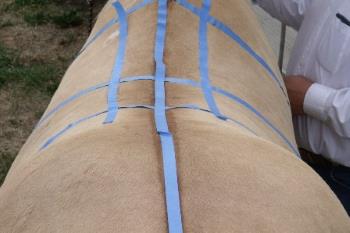 |
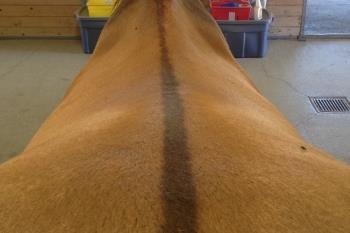 |
Some people think that when we get Dennis Lane measurements or back drawings of a horse, we make the bottom of our bars the exact reverse of the back shape of the horse. Nope, we don’t. We have to make a tree that fits that horse, a tree that works whether the horse is standing still or moving, is walking, trotting or loping, is going uphill or down, is dragging a calf to the fire or holding the rope while the cowboy is doctoring the animal. This means that we learn the basic body type of the horse from the drawings or DL measurements and then we make the tree with the allowances built in that are needed to fit that body type.
An example of this the crown shape we put on the back bar pads, which go over the last few ribs and the front part of the loin. For a horse that is flat, we use a round shape, and for a horse that is round, we use a flatter shape. (Shock and heresy!! I can hear the cries now!) Allow me to explain…
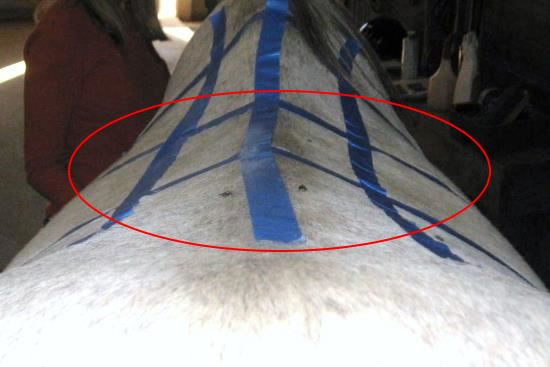
Here’s a horse where the muscles under the back bar pad are flatter and drop away from the spine. This may be due to lack of conditioning, disuse, damage and atrophy, or maybe it is just the way this horse is made. Possibly these muscles could be strengthened and become rounder. Or maybe not. At any rate, this horse is always going to have flatter muscles than a foundation bred quarter horse type.
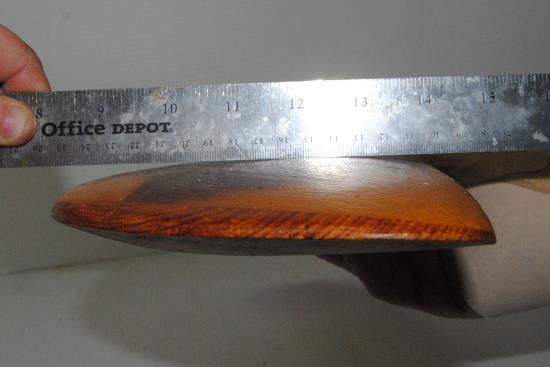
And this is the crown pattern we would use on this horse – our roundest one. Why? Why not use a flat one to match the horse? One word – edges. Muscle, even well toned muscle, is relatively soft compared to a tree in a saddle, even with leather, shearling and padding between them. So when pressed together by a rider’s weight in the saddle, it is the muscle that gives and the edges, though padded and protected by the aforementioned material, can create high pressure points if they are too sharp.
Our goal regarding edges is to extend the transition zone from pressure to no-pressure over as wide an area as possible. With a horse with flatter muscles, the edge is more likely to dig in with a flatter bar. A rounder crown pattern gives more even pressure over the whole bar pad and allows that transition zone around the edge to be longer, meaning no high pressure edges. So round on flat works.
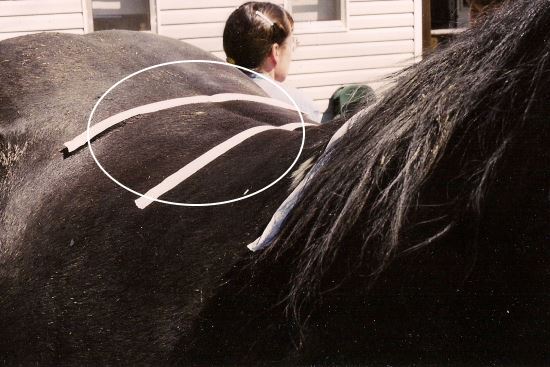
So what do we do with this horse where the muscles rise on either side of the spine and bulge upward?
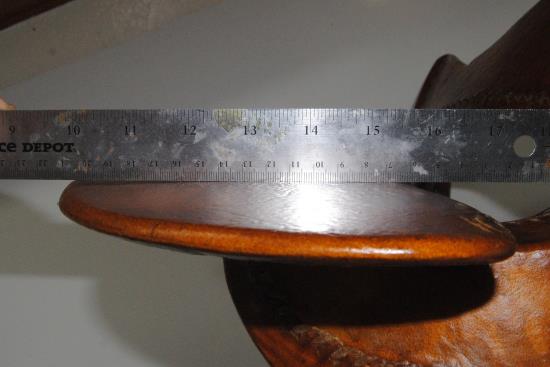
This is the guy we will use our flattest crown pattern on. It is almost, but not quite, totally flat across the bar with just a bit of relief on the edges. Why this one? Because edges are not likely to be a great concern on this horse. When the rider presses the bar into the horse, the bulging muscle compresses and becomes flatter but even then the likelihood that the edges will dig into the horse is slim. So flat on round works.
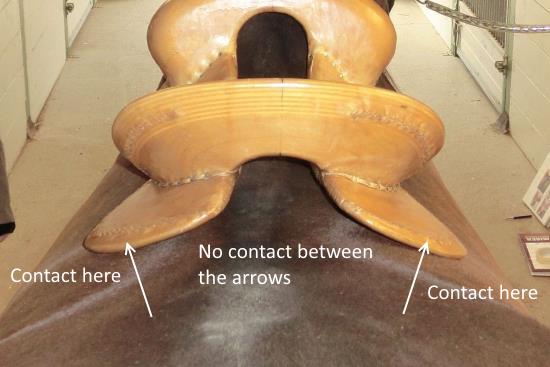
This assumes, of course, that the angle at the back is correct. Here’s what can happen if the angle is really too steep – the outside edge will dig in while the inside edge has minimal pressure. If there is too much angle, that isn't as bad since the inside edge is much rounder than the outside edge on flatter bars, at least on our trees. (A quick comment here. We set our bar “angle” based on the wither shape of the horse. The “angle” at the back is determined by the amount of twist in the bar. You can have the same “bar angle” at the front and different “angles” at the back due to different amounts of twist.)
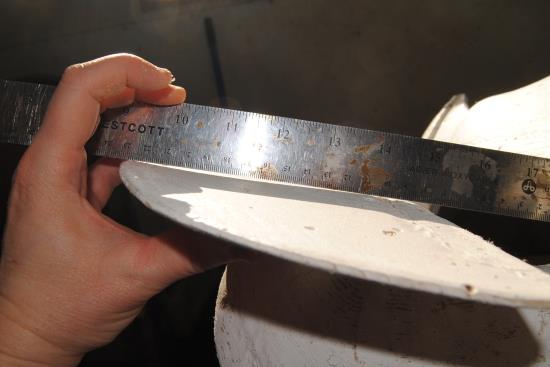
Sometimes we get asked why we don’t make the bars concave for horses like the black one? Well, it’s those silly edges again… Here’s a picture of a bar that has been made just very slightly concave.
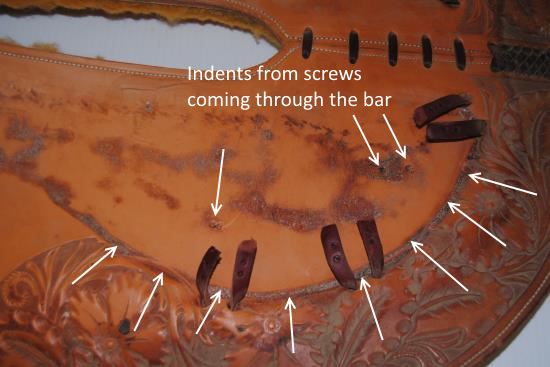
And here’s the skirts from that saddle. You can see where the pressure was – principally along the edges of the bar, and also under the screws that protruded through the bar. (Something saddle makers need to be aware of with those nice thin bars…) While concave sounds like a good idea, edges make it a bad idea...
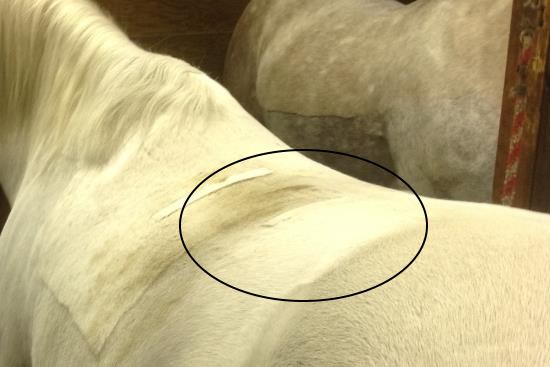
What about the guys in between, the ones that aren’t bulgy but aren’t flat either?
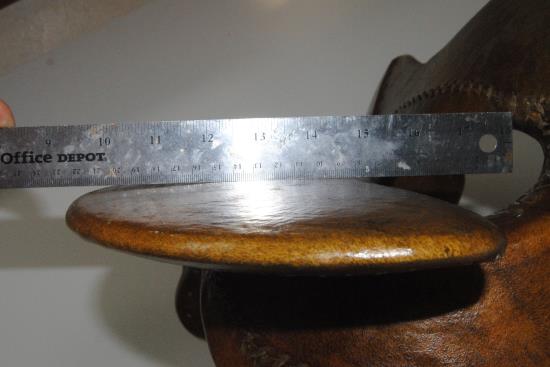
Well, we use an in between crown pattern on them. Actually, this is the most common crown pattern we use because most horses fit the middle of the road shape under the back bar pad. It is the most versatile, as we have found it will work on the widest range of horses.
So there you go - more about the art and science of tree making: the reason why we don’t shape the bar to be a mirror image of the horse…
